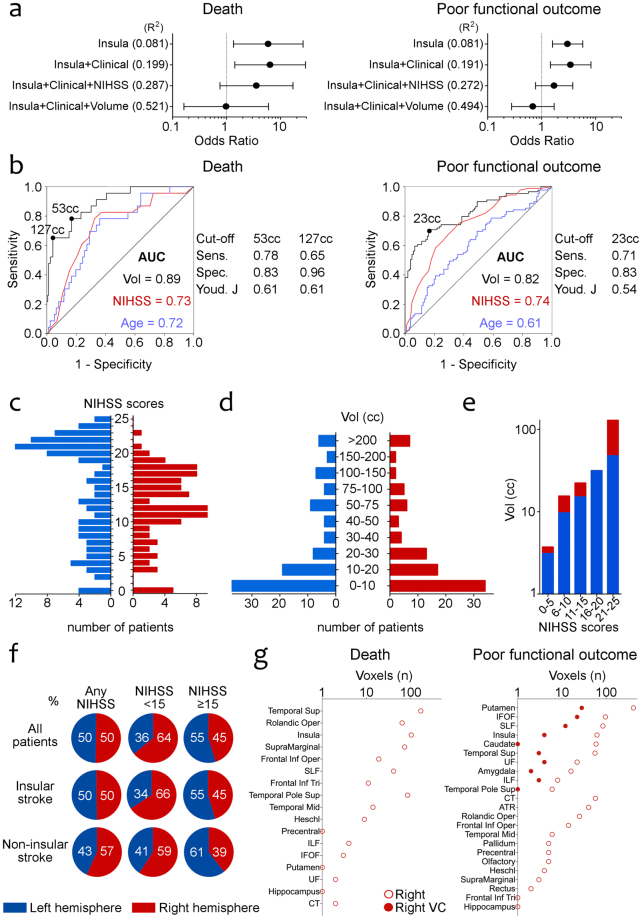Figure 3.
Inaccurate lesion volume measurements and patient selection can influence the laterality of associations with outcome measures. (a) Forest plots showing the odds ratios of death and poor functional outcome in insular strokes in different logistic regression models. (b) Receiver Operating Characteristic curves of infarct volume, NIHSS score and age for death and poor functional outcome and the performance of different volume cut-off points. Infarct volume had the greatest predictive value, specially for mortality. (c) The distribution of the number of patients with left and right hemispheric lesions in each NIHSS score at admission is asymmetrical. (d) The number of patients in each infarct size category is similar in right and left hemispheric lesions. (e) Infarct volumes are greater in right hemispheric lesions compared to left lesions in each NIHSS score category. (f) Total infarct volume in the whole cohort is similar in right and left lesions, but right lesions are greater in patients with lower NIHSS scores (especially in insular strokes) while left hemispheric lesions prevail in higher NIHSS scores. (g) Right brain structures are associated with death and poor functional outcome in VLSM analysis of a biased population after deleting patients with left hemispheric lesions in the upper NIHSS tertile. Abbreviations: NIHSS, National Institutes of Health Stroke Scale; AUC: area under the curve; Vol, volume; Sens., sensitivity; Spec., specificity; Youd. J, Youden’s J statistic; SLF, superior longitudinal fasciculus; IFOF, inferior fronto-occipital fasciculus; UF, uncinate fasciculus; ATR, anterior thalamic radiation; CT, corticospinal tract; ILF, inferior longitudinal fasciculus; VC, volume control.

